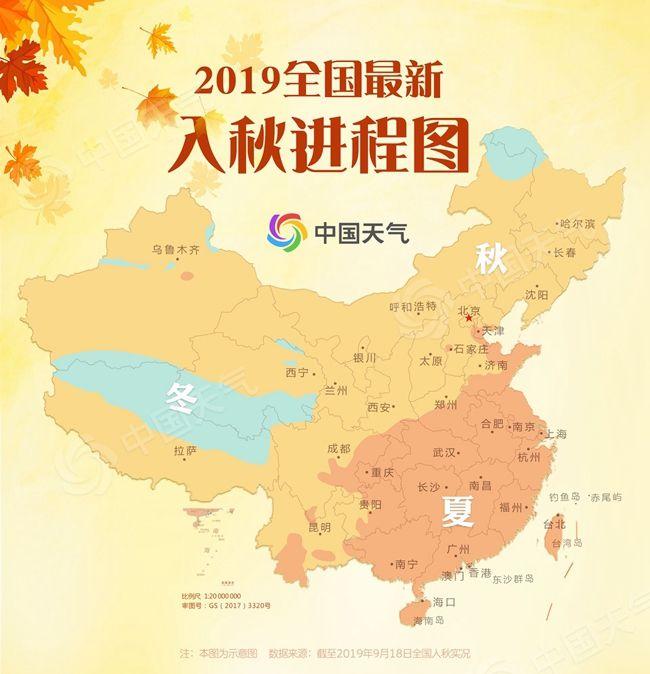The latest national autumn progress map is released! See when Miss Qiu will come to your house.
China Weather Network News Under the successive cold air attacks, China has started the transformation of summer and autumn seasons from north to south. As of September 18, many places in the north have entered autumn, and some areas in Inner Mongolia, Heilongjiang and Qinghai have even entered winter, while most areas in Jiangnan and South China have just got rid of the high temperature and heat, still looking like summer. China Weather Network has launched the latest national autumn progress map in 2019. Come and see if Miss Qiu has come to your home.

It is winter when autumn comes to a few areas in the north.
According to Wang Weiyue, a meteorologist of China Weather Network, as of September 18th, many places in northern China have entered the ranks of autumn, especially in northeastern Inner Mongolia, northern Heilongjiang, northern Tibet, northern and southern Qinghai, and parts of Xinjiang, and even entered winter.
However, there are still some areas in the north that are under the influence of summer. For example, the northwest of Shandong, including Jinan, has entered autumn, but the east and south of Shandong are still in summer. Cities such as Shijiazhuang and Tianjin are not in autumn at present, but one foot has passed the threshold of autumn, and autumn is just around the corner.
Jiangnan and South China are still in summer and autumn, and it needs to wait until October.
Compared with the north, southern Huanghuai, Jianghuai, Jiangnan, southern China, most of Jianghan and southern Yunnan are still firmly controlled in summer. However, with the southward movement of cold air around 18-20, the temperature in many areas in the south also drops, which may even make people feel cool in the morning and evening, but it is only cool. It is still very difficult to enter autumn.
From the distribution of autumn in 1981-2010, the autumn in Jiangnan and northern South China was in October, while the autumn in southern South China was even after November. Generally speaking, the pace of autumn was still far away from Jiangnan and South China.
The standard of entering autumn is very strict, and the calculation is very complicated
Meteorologically, there is a strict definition of the standard for entering autumn. The standard is that when the 5-day moving average temperature in a certain place is less than 22℃ for five consecutive days, the first date less than 22℃ is taken as the start date of autumn.
Wang Weiyue explained that the average temperature of a day is the average of the temperatures at 02: 00, 08: 00, 14: 00 and 20: 00 on that day, while the average of the 5-day sliding temperature is the average of the average temperature of the day and the average temperature of the previous 4 days. For example, the average of the 5-day sliding temperature on September 18 is the average of the five days from September 14 to 18. Only when the average of the 5-day sliding temperature of a region for five consecutive days is less than 22 C can this be determined. (Planning/Zhang Hanxi Data Support/Wang Weiyue Design/Luo Jiaxue Audit/Liu Jun Hu Xiao Liu Hongxin)